There isn’t anything on planet Earth that’s like using an offset smoker to create mouthwatering barbecue meals.
The combination of smoke and fire that combines to create such delectable morsels as smoked brisket and low and slow pork shoulder is heavenly, but only if you can control the flames in your pit.
You see, maintaining a consistent temperature for 8-16 hours isn’t just science, it’s an art form. Now, we’re going to level with you, this process can take hours to learn. If you stick with it, though, it is very worth it once the process is learned.
In this article, we’re going to show you how you can maintain a super steady fire in your offset to create that bark and ring that you’ve been gunning for.
Note: Some of the links in this article may be affiliate links. This doesn’t cost you any more than normal. Read our disclaimer for more info.
Offset fire management can be tricky, even if you’ve done it many times before.
There’s charcoal pieces, wood splits, intake and exhaust dampers, outside temperature, thickness of the metal of your smoker, wind, rotation of the Earth, and how you hold your tongue to consider… Well, maybe not those last two, but the sum of it all can be overwhelming!
With so many things to worry about, how can you be sure that you’re using the method that will give you the best results, and where do you start?
How Do You Control The Temperature On An Offset Smoker?
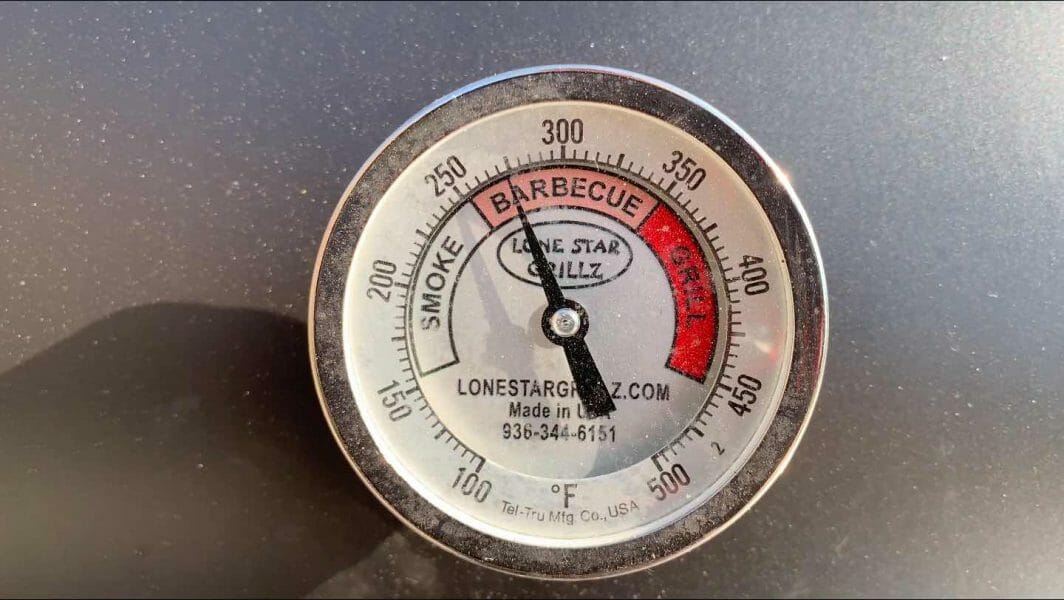
To manage the temperature on an offset smoker, you need to manage two primary things; airflow and the size of your fire. Airflow is controlled by the size of the opening you leave on your intake and exhaust vents. The size of the fire is controlled by how much wood and charcoal you’re adding to the offset firebox.
To better understand how to manage your fire, let’s start with the science of fire management.
How Does An Offset Smoker Work?
An offset smoker works by creating a fire by adding charcoal or wood splits to an offset firebox that exists outside the main cooking chamber of the unit. An air intake vent allows air into the offset firebox which supplies a critical component of fire. The intake of air flows across the fire and into the main cooking chamber drawing heat around your target food.
Heat, fuel, and oxygen are required for the fire, and the intake damper of an offset smoker controls the critical supply of air to determine the height of your flames.
If you close the damper down all the way, it restricts the flow of air and chokes out the fire. Open the damper all the way, and the fire has unlimited oxygen for fire and it can quickly get out of control.
The art of offset smoker fire management comes when you understand how your particular smoker reacts to fire size and allowed oxygen amount.
What is the Perfect Fire Size for an Offset Smoker?
Aah, don’t you wish it was that easy? There is no perfect fire size that fits every offset smoker. There is a perfect fire size for your smoker though, and here’s how to find out what it is.
Start by lighting up a chimney of lump charcoal to get things started. Lump charcoal tends to burn hotter than charcoal briquettes, and with this chimney of coal, we’re looking to jumpstart the smoker and get it up to temperature.
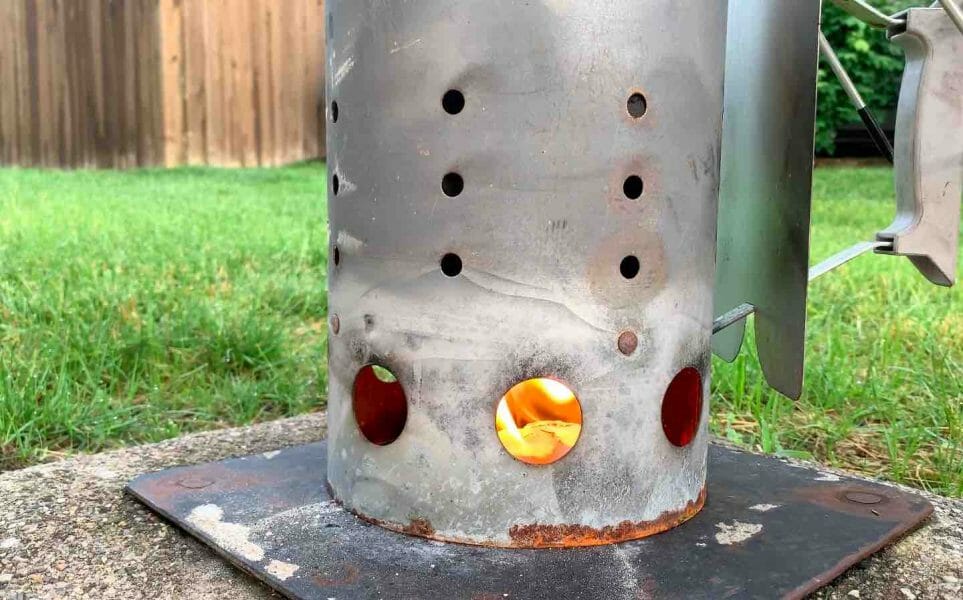
We like to use tumbleweed fire starters to light our fires here at The Barbecue Lab, and our favorite lump is Rockwood charcoal. If you haven’t yet picked up a charcoal chimney, the BBQ Dragon and the Dragon Fan is one of the coolest grilling toys we’ve seen in years. It lights up charcoal in only about 3 minutes, instead of 20+ minutes, and we love it here at the Lab.
What you’re looking to learn here is how hot a single chimney of charcoal will get your offset. Dump the lit charcoal into the firebox and close the lid. For the intake vent, go ahead and leave it wide open on the firebox and the same goes for the exhaust vent on the smokestack.
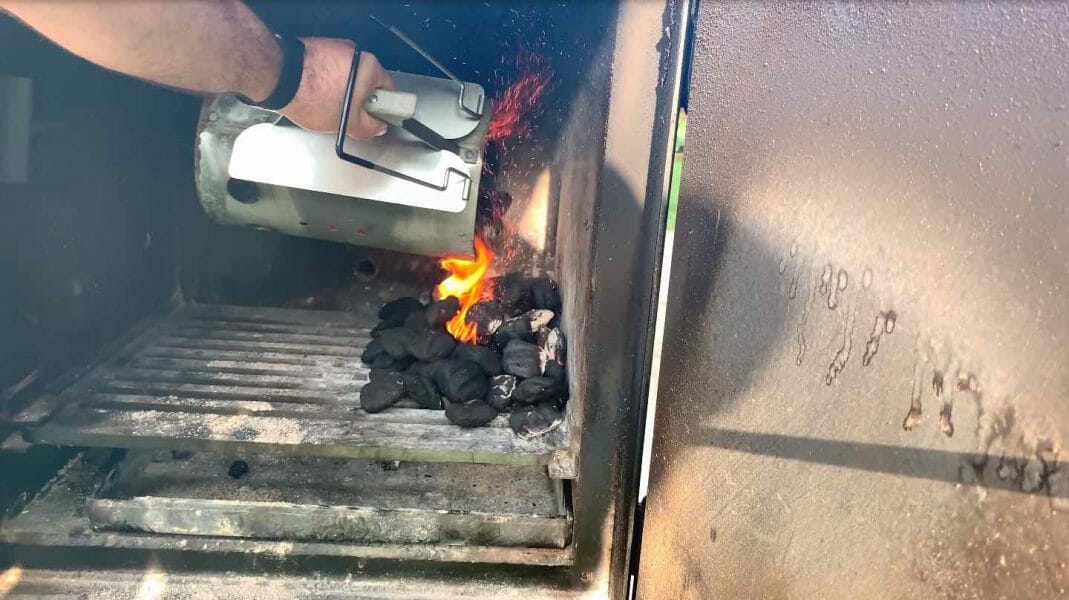
Here’s where the patience comes in. Set a timer for 30 minutes and don’t fuss with it. Just let the cold smoker heat up and see how hot it gets. We’re going to call this your smoker’s baseline level.
Maybe your smoker will get up to 200 degrees, and that’s just fine. For others, your smoker might get up to 350 degrees. Great! The final temperature isn’t important for our purposes, and a higher temperature at this point doesn’t necessarily mean that your smoker is better or worse, it just is what it is.
Whatever temperature your smoker gets to with one chimney of coal after 30 minutes, it’s time to think through how to get your smoker to 275 and get it to hold for an hour.
For those of you sitting at 225, it’s time to add a piece of smoking wood to the top of the coal bed. If you’re one that had your cooker hit 350 on a single chimney, then next time you can start with a half a chimney and see where that takes you after 30 minutes.
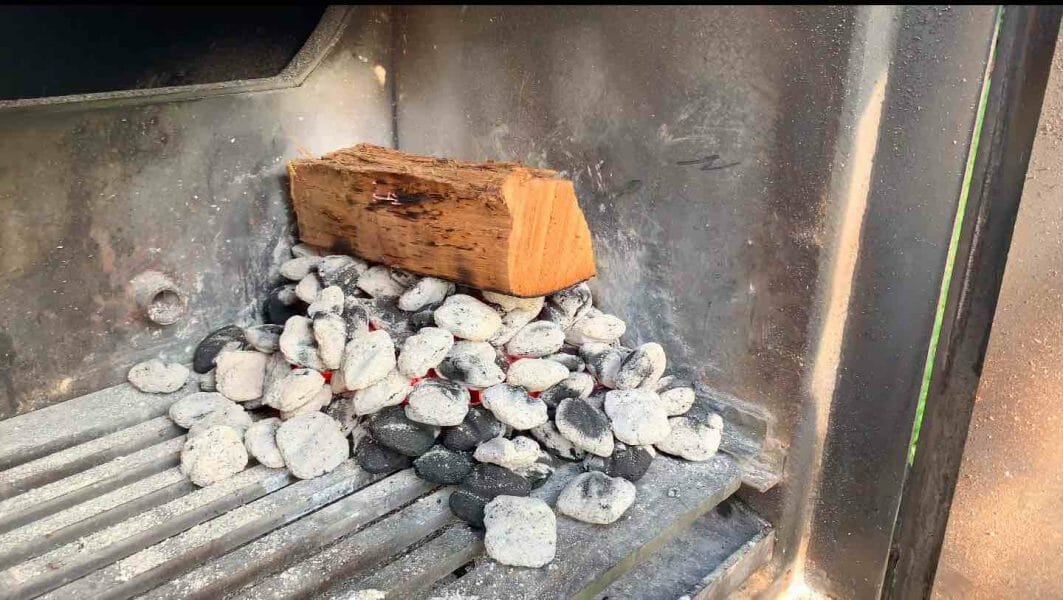
If you’re like most people, you might be wondering why 275 is our target temperature for this test. We’ve learned over the years that 275 is a sweet spot for everything from brisket to pork butt to ribs. It’s the temperature that we work to maintain for most of our cooks that we do on offset smokers.
You’re absolutely welcome to pick another temperature number for your test, but for the remainder of this article, we’re going to aim for 275.
If you added a piece of oak, birch, or your favorite wood to the top of your charcoal, you probably noticed that it didn’t light straight away. Maybe it took minutes, or maybe it didn’t even light at all. That’s because the log hadn’t “warmed up” and it took a few minutes to get the log to the temperature level where it could combust.
If your log didn’t light at all, you’re working with wet wood that hasn’t seasoned yet. Let that wood sit out for a year and it’ll burn just fine next season.
This is where we suggest a particular way of lighting your fire in an offset to allow you to warm up logs in your firebox. In our Lone Star Grillz 24×48 offset, we always set our fire against the wall of the box that’s away from the side we can get into. For the Lone Star, you can access it on the right side of the firebox since the door opens to the right.
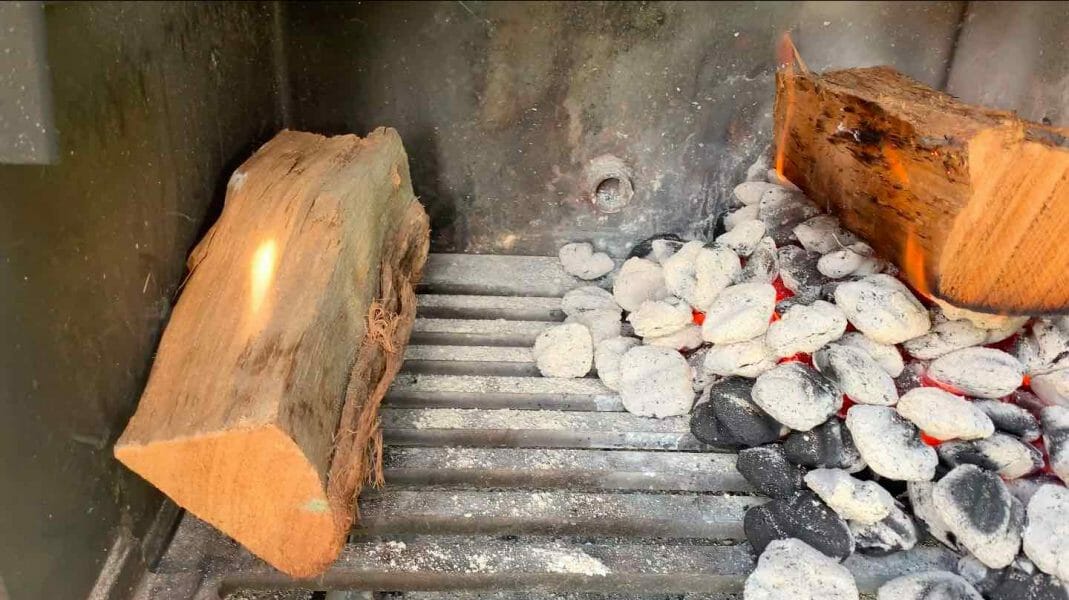
By building the flames on the far side of the box, we leave room to place an unlit log on the far left side of the box to heat up. As the last log that was placed on the built up fire turns to embers, the log on the left side of the box will already be warm and take just a few seconds to start burning after being placed on the coals.
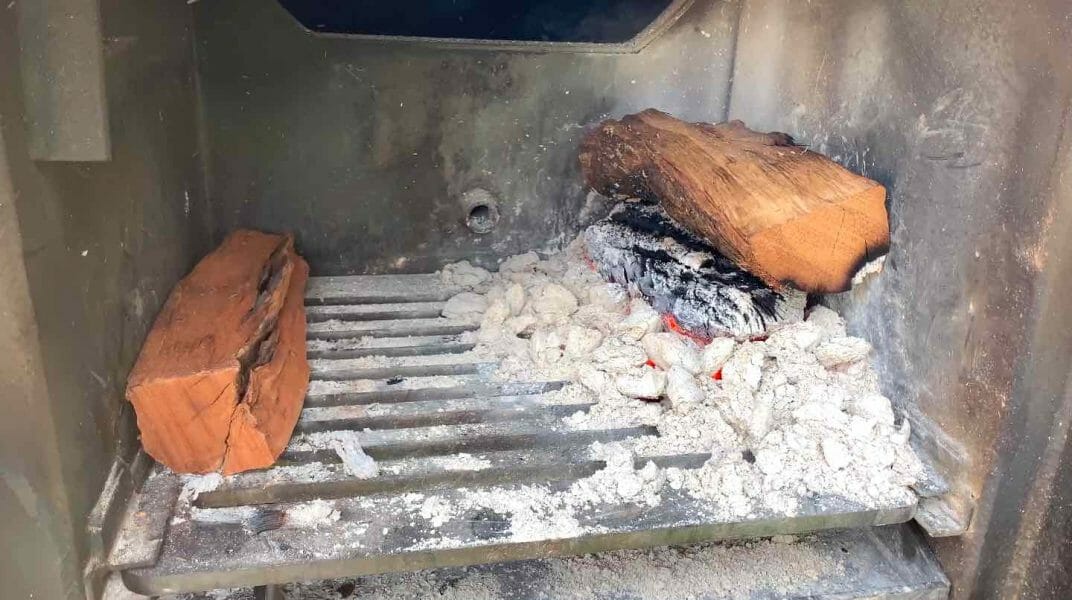
Replace the log on the left every time you place the warmed up log on the fire, and you’ll eliminate the thick smoke that comes off a log that hasn’t been warmed up.
Thick White Smoke Vs. Thin Blue Smoke
Wait, we want smoke for flavor though, right? That’s the whole reason that we’re doing this in the first place?
Yes and no. The whole point of smoking food is to impart a smoke flavor and ring on the food, and that is best accomplished by thin blue smoke instead of dense white smoke.
If you see that thin smoke, it’s a good sign that your meat will be covered in great, smokey flavor that will take your foods to another level. Just cook the food on your grill grate and enjoy the delightful, smokey taste.
Dense white smoke will bring a bitter flavor to your food while thin, clean, blue smoke infuses smoky goodness into your meal. For years, even competition bbq cooks would try to keep all of the thick smoke in their cookers to get as much smoke on the meat as possible, but we’ve learned a better way.
When we run our Lone Star, we always run it with both dampers wide open. We want maximum airflow to be able to get to the flame and carry thin smoke across our meat and out the exhaust.
The more we choke down our flames, the denser the smoke gets and the more bitter our meat will taste. We find that the more open we can keep things, the better the ring and the smokier the meat.
So, back to the test. Our goal is to figure out what it takes to get and keep your smoker at 275 degrees with the intake and exhaust vents open. This process is for an offset smoker and not a kamado grill as they work differently and need a different fire management method.
Check how hot your pit gets after a chimney of lit charcoal pieces and record the pit temperature after adding a single piece of dry wood and then two splits of wood. Check the sizes of the splits of wood because not all splits are made equal. How big the wood splits are can affect how long it takes for the wood to get from cold to hot, and finally ignite.
Some wood splits are simply logs quartered while others are logs split 8 ways. There’s also the size of the wood splits to consider as very large logs split 8 ways can still be huge.
The secret to good and consistent fire management is knowing what amount of fuel your pit requires to achieve your desired temperature. Once you learn your way around your pit, getting a consistent temperature should become easier.
For our Lone Star Grillz unit, we take two full chimneys of lump charcoal and add them first while immediately adding our first piece of wood. Adding the charcoal and wood will get our cooker up to 275 for 45 minutes before we need to place another log on the fire to maintain temperatures. From there, we just put our food on the grill grate and get to grilling!
There’s nothing like time and experience when it comes to maintaining a consistent flame on your offset, so set a time this weekend to light a fire with plans to cook nothing, and I’m sure you’ll be glad you did.
If you like what you read here, check out some of our other gear and techniques posts and videos. Here at The Barbecue Lab, we exist to help you win your weekend, and we hope to see you back here again.
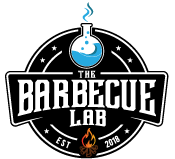
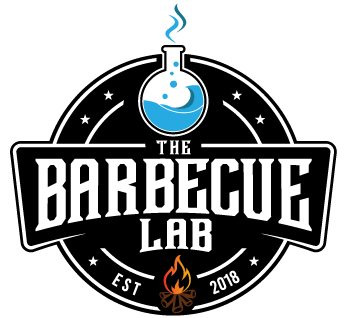
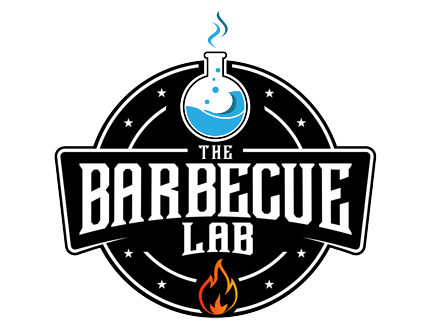
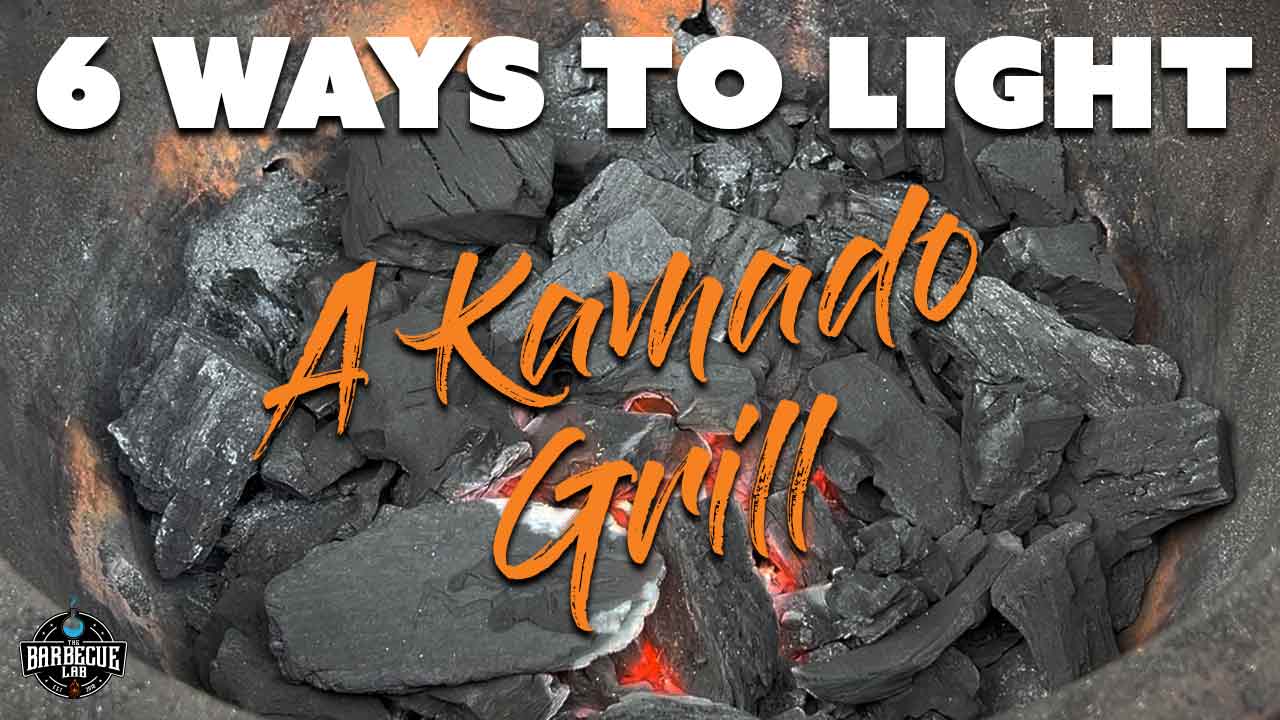
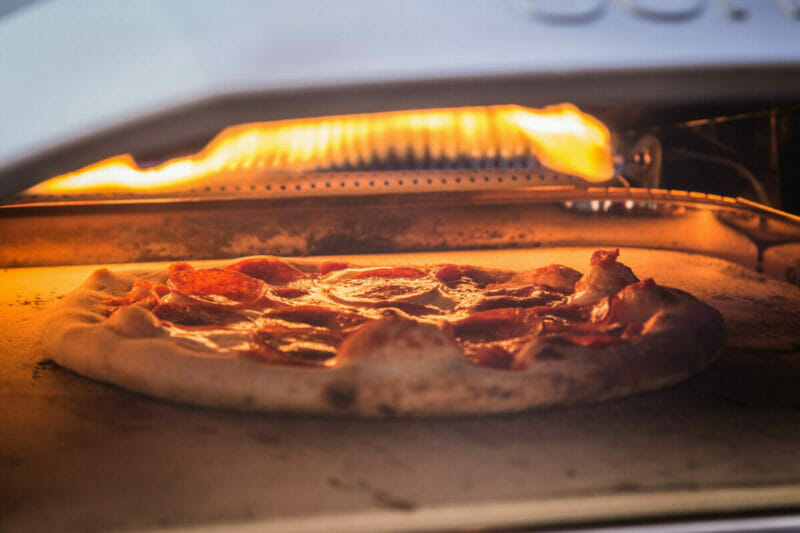

Sandy McBee
September 16, 2020 3:54 amMr. Gafford,
I recently read your article & saw the video on Off Set Fire Management. Can the same technique be used on reverse smokers?
Thanks,
Sandy
RICHARD SKEEN
November 17, 2020 11:40 pmthe same method would apply as the only difference is how far the smoke travels to escape. The firebox will still be the same. find the sweet spot and try to maintain it.
Eel
May 1, 2021 9:01 amVery informative and helpful. Still learning and trying here. Thanks for sharing!
Ivan Roberts
May 15, 2022 8:40 pmI am building a reverse offset smoker from a 100lb propane bottle. Diameter is 15”.
My question is how big should I make the opening from the fire box?
I have seen 6” round to 10” wide at the top and 4” high.
What is your thoughts?
Also I see some very big fire boxes. Is that required for air draw?
David Gafford
May 16, 2022 1:10 amI’d help you out here if I could Ivan, but I’m not a pit builder. You might check out some Facebook groups like, “Built not Bought Smokers.” I think that’d be right up your alley.
Gregory
September 5, 2022 3:42 amThank you so much. I have looked at so many videos in order books to find out how to control the white smoke or dirty smoke. But no one explain it like you so I’m going to try it. thank you so much. I would like to see more articles that you have
David
December 18, 2023 1:07 pmGreat info on controlling fire. Question I have is after you do initial 2 buckets of coals how often are you adding more if any on let’s say a 12-14 hour cook.
Thanks
David Gafford
December 18, 2023 3:35 pmI usually find that the wood creates and keeps the coals going after the starter coals fade, but if I get in a situation where I needed more coal bed, here’s what I’d do. Jay over at Outlaw Smokers told me one time that on his offset pits a good way to maintain a solid coal bed is throw a “Char Log” on the fire whenever you add a new split of wood. (Link for reference: https://amzn.to/481ymtn) I find that these char logs will burn longer than traditional charcoal, and they maintain a great coal bed if the wood isn’t creating enough to keep things going.